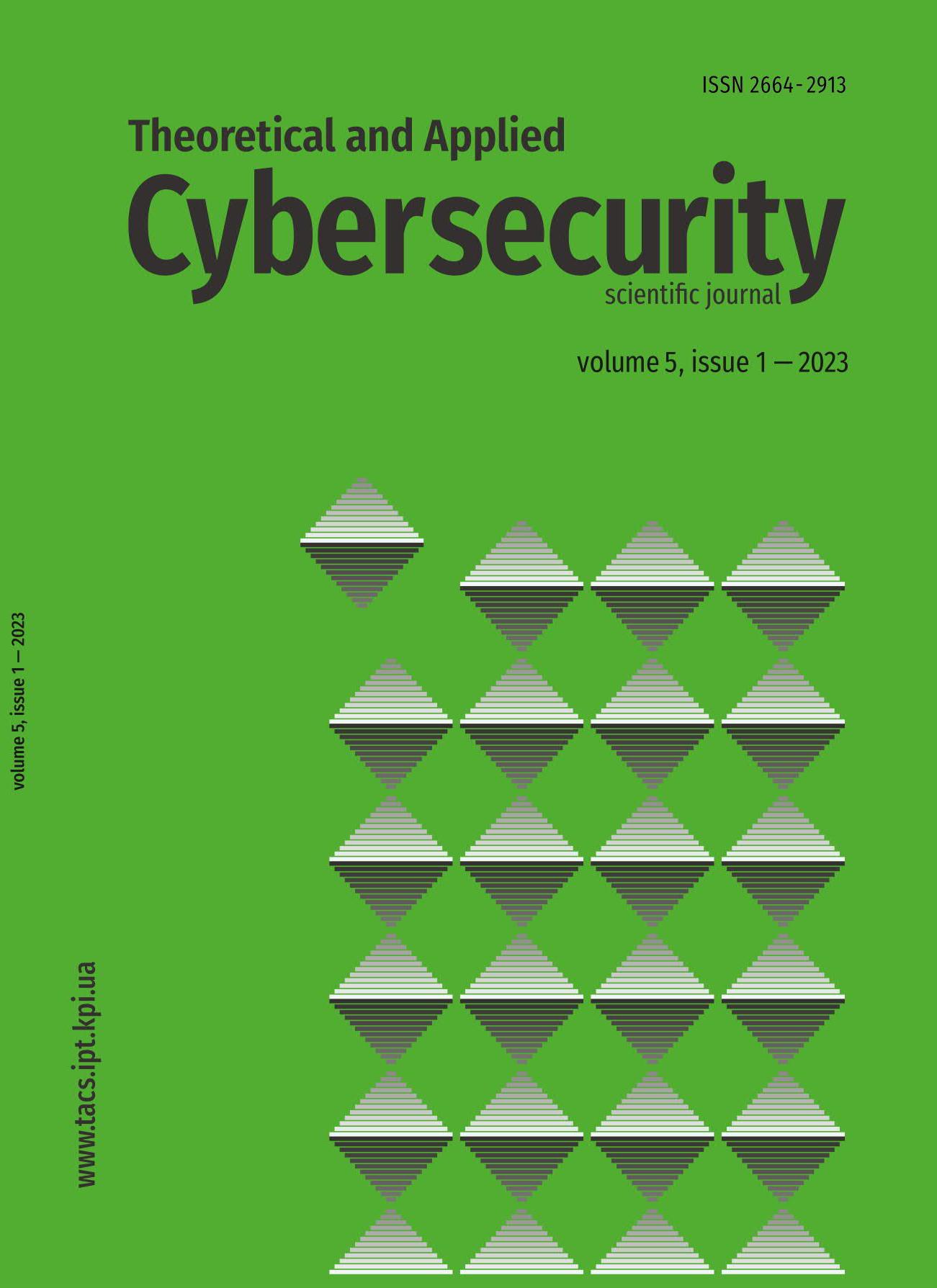Power Analysis Template Attacks on AES-128 Hardware Implementations and Protection Against Them
DOI:
https://doi.org/10.20535/tacs.2664-29132023.1.281307Abstract
The purpose of this work is to research AES-128 power analysis template attack and propose a practical way to mitigate such kind of side-channel attacks. The research includes a review of power analysis side-channel attacks, an experiment with the collection of Atmega328PU chip power samples using Hantek 6022BE oscilloscope, processing collected data, and modeling – building a statistical template of the device and analyzing parameters of the side-channel attack.
The work is focused on preparation and carrying out the experiment. The experimental bench layout and procedures for collecting and processing the data are considered in detail. The result of this work is the confirmation of the effectiveness of power analysis template attacks on AES-128 for Arduino Uno hardware, and a mechanism for mitigating such kind of attacks on the particular hardware and software implementation. Research materials described in the current work could be used for developing other side-channel template attack mitigation mechanisms for other cryptographic implementations.
Downloads
Published
Issue
Section
License
Authors who publish with this journal agree to the following terms:
Authors retain copyright and grant the journal right of first publication with the work simultaneously licensed under a Creative Commons Attribution License that allows others to share the work with an acknowledgement of the work's authorship and initial publication in this journal.
Authors are able to enter into separate, additional contractual arrangements for the non-exclusive distribution of the journal's published version of the work (e.g., post it to an institutional repository or publish it in a book), with an acknowledgement of its initial publication in this journal.
- Authors are permitted and encouraged to post their work online (e.g., in institutional repositories or on their website) prior to and during the submission process, as it can lead to productive exchanges, as well as earlier and greater citation of published work (See The Effect of Open Access).

